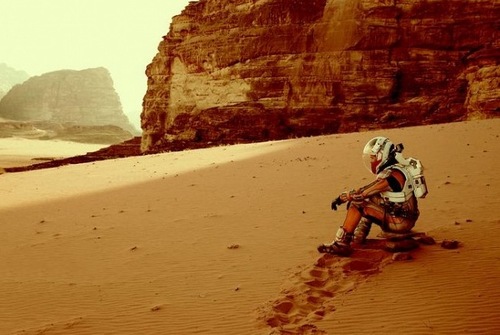MARS FEVER IS HEATING UP AGAIN
/
A scene from The Martian from 20th Century Fox
If you follow the news at all, you’ll have heard the big news from NASA this week:
They’ve confirmed evidence that liquid water sometimes flows on Mars.
The evidence relates to certain kinds of darks streaks that have been observed down mountainous slopes in a number of locations. The streaks appear to ebb and flow according to the Martian season. The NASA scientists are convinced that the streaks are flows of liquid water just beneath the surface which occur when the temperature rises above minus 23 Celsius. Obviously that’s a lot colder than the freezing point of fresh water, but this Martian water thaws and stays liquid at that temperature because its full of various perchlorate salts (the same principle as the ice melting stuff you might sprinkle on your driveway in the winter).
Why is it important? Because liquid water is considered to be a prime requirement to support life. Mind you, this Martian water is probably too salty to support life as we know it, but never count life out—it’s constantly surprising us. So this is the best evidence yet that there has been/is now/could someday be life on the Red Planet (take your pick).
We’re eager to know if Earth is the only home of life in the universe. And there are many reasons we might want to establish a permanent presence there—if we do, we’ll want to take some of our plants with us. A planet with the means to support life just might be coaxed into supporting our kind of life.
The timing of the NASA announcement happens to coincide with the release this week of the movie The Martianstarring Matt Damon and based on the novel by Andy Weir. The story is about an astronaut accidentally left behind on a Mars mission who has to survive using only what he has on hand and a vast amount of ingenuity. The book was great—I hope the movie will be too. Once you go see it you’ll no doubt want to read about the nine real NASA technologies featured in the film.
Perhaps to capitalize on all this interest (and why shouldn’t they?) NASA has also begun a series of articles about NASA technologies that have been spun off for useful purposes here on Earth, and I’m not talking about Tang or Space Food Sticks. The developments include sensors that attach to plants and help farmers give their crops the optimal amount of water without wasting it, a radar water-detection system that was used to locate a huge reservoir in one of the world’s driest inhabited areas in northern Kenya, and an oxygen recovery system that’s used in refuge shelters for miners in the event they’re trapped underground.
A research paper from a NASA-led team published last month also got some attention by making a thorough scientific case for the use of cyanobacteria in efforts to colonize Mars. Different varieties of the bacteria could be used to pull nitrogen out of the air and into the soil where it would help plants to grow, mine desirable minerals from rocks, produce oxygen for us to breathe, create hydrogen fuels or biofuels, provide the basis for synthetic manufacturing compounds, and even feed the colonists. Terraforming Mars with bacteria might take a very long time, but it would be a whole lot easier and cheaper to transport there than the end products we’d use it to make.
To fully answer why we care about all of this, you’d have to answer why Mars has fascinated humans for thousands of years. It has, and will continue to do so.
Let’s be honest: we’re messing up Earth in a big hurry. We need somewhere else to go, for the sake of our home planet and for the sake of our descendants. Mars is relatively close and available. The Mars Express has begun to gather steam. Let’s hope it really gets rolling soon.




